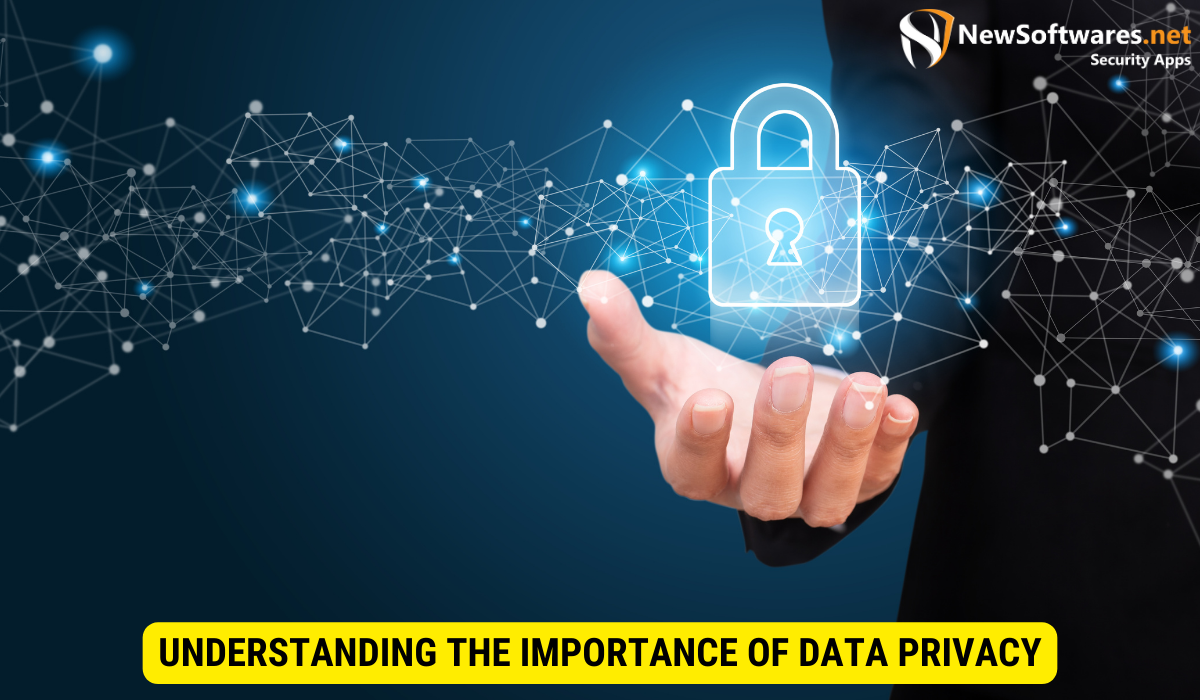Enhancing data privacy through sync data encryption with a sync passphrase is crucial in today’s digital age. This article explores its significance, the role of encryption, sync passphrase basics, steps to encrypt sync data, maintenance tips, and solutions to challenges.
In today’s digital age, where data breaches and privacy concerns are becoming more prevalent, it has become crucial for individuals and organizations to take proactive measures to safeguard their data. One effective way to enhance data privacy is by encrypting all sync data with your sync passphrase. Together, we will explore the significance of data privacy, the role of encryption in protecting sensitive information, the basics of sync passphrase, steps to encrypt sync data using a sync passphrase, maintaining data privacy, and potential challenges and solutions in this process.
Understanding the Importance of Data Privacy

Data privacy protects an individual’s or an organization’s sensitive information from illegal access, use, or disclosure. Maintaining data privacy has become paramount with the rising reliance on technology and the widespread sharing of personal and confidential data.
When data privacy is compromised, the consequences can be severe, including identity theft, financial losses, reputational damage, and legal ramifications. Therefore, it is crucial to adopt strong security measures, for instance encryption, to safeguard sensitive data.
The Role of Encryption in Data Privacy
Encryption is the process of converting plain text or data into an unreadable format, often referred to as ciphertext. This conversion makes it extremely difficult for unauthorized individuals to decipher the information, ensuring its confidentiality and integrity.
By encrypting data, sensitive information remains secure even if it falls into the wrong hands. Without the corresponding decryption key or passphrase, the encrypted data is virtually useless to anyone attempting to gain unauthorized access.
The Concept of Sync Data
Sync data refers to data synchronization across multiple devices or platforms, allowing seamless access and updating of information. It allows users to access their information from any device and ensures that changes made on one device are reflected on all coordinated devices.
While sync data offers convenience, it also presents a potential risk if the information is not adequately protected. However, encrypting sync data using a sync passphrase can mitigate these risks and enhance data privacy.
The Basics of Sync Passphrase
What is a Sync Passphrase?
A sync passphrase is a user-defined password or phrase used to encrypt sync data. It serves as an additional coating of protection, ensuring that only official persons can access and decrypt the synchronized information.
The sync passphrase differs from the account password and is used explicitly for encrypting and decrypting sync data. It should be unique, complex, and kept confidential to maintain the integrity of the encryption process.
Why Use a Sync Passphrase for Encryption?
Using a sync passphrase for encrypting sync data provides several advantages:
- Enhanced Security: By adding a sync passphrase, even if an illegal user gains access to your synchronized data, they won’t be able to decrypt it without the passphrase.
- Customized Encryption: With a sync passphrase, you can control the encryption process. You can choose a passphrase that is easy to remember but difficult for others to guess, ensuring maximum security.
- Flexibility: A sync passphrase allows you to synchronize your data across multiple devices, providing a seamless user experience without compromising privacy.
Steps to Encrypt Sync Data using a Sync Passphrase
Setting Up Your Sync Passphrase
Before you can encrypt your sync data using a sync passphrase, you need to set it up:
- Choose a Strong Passphrase:Select a passphrase that is unique, complex, and hard to guess. Avoid using common phrases or personal information that can be easily deduced.
- Access Sync Settings: Locate the sync settings in your application or platform and navigate to the security or privacy section.
- Enable Encryption: Look for the option to enable encryption and follow the prompts to set up your sync passphrase.
Encrypting Your Sync Data
Once you have set up your sync passphrase, you can proceed to encrypt your sync data:
- Access Sync Settings: Locate the sync settings again and navigate to the encryption or security section.
- Enable Sync Encryption: Enable the sync encryption feature and enter your sync passphrase when prompted.
- Confirm Encryption: Follow the on-screen instructions to confirm and save the encryption settings.
By completing these steps, all your sync data will be encrypted using your sync passphrase, ensuring privacy and security.
Maintaining Your Data Privacy
Regularly Updating Your Sync Passphrase
To maintain the highest level of data privacy, updating your sync passphrase regularly is essential. Regularly changing your passphrase reduces the likelihood of illegal access, especially in the event of a security breach.
Make it a practice to update your sync passphrase every few months or whenever you suspect any potential compromise. Remember to choose a new passphrase that adheres to the same security principles as the original one.
Best Practices for Data Encryption
In addition to encrypting sync data with a sync passphrase, here are some best practices to enhance overall data encryption and privacy:
- Strong Passwords: Use strong and unique passwords for all your accounts and devices to create an additional layer of protection.
- Two-Factor Authentication: Enable two-factor authentication when possible to attach extra security to your accounts.
- Regular Software Updates: Keep all your applications, operating systems & devices updated with the latest security patches to minimize vulnerabilities.
- Secure Network Connections: Only access sensitive data when connected to secure and trusted networks, such as your home or office network.
- Data Backup: Regularly back up your data to alternate storage locations or cloud services to ensure you can recover it in case of data loss or device theft.
Potential Challenges and Solutions

Common Issues in Encrypting Sync Data
While encrypting sync data using a sync passphrase offers significant advantages, it can sometimes pose challenges:
- Compatibility: Some devices or platforms may not be compatible with sync encryption or require additional configuration. Check the documentation or support resources for specific instructions.
- Forgotten Passphrase: You may lose access to your encrypted sync data if you forget your sync passphrase. Therefore, it is essential to store the passphrase securely but make it accessible to you when needed.
- Multiple Sync Passphrases: If you use multiple sync services or devices, managing different sync passphrases can become complex. Consider using a password manager or securely documented system to track and manage your passphrases.
Overcoming Encryption Challenges
To overcome potential challenges in encrypting sync data, consider the following solutions:
- Research and Support: Consult the documentation or support resources provided by the device or platform you use to troubleshoot compatibility or configuration issues.
- Passphrase Recovery: Implement a reliable method of passphrase recovery, such as securely storing it in a password manager or utilizing account recovery options.
- Passphrase Consolidation: Minimize complexity using the same sync passphrase across compatible devices and platforms. Consider using a strong, unique master passphrase to simplify this process.
Key Takeaways
- Encrypting sync data with a sync passphrase enhances data privacy and protects sensitive information.
- Data privacy is crucial in today’s digital age, given the potential consequences of unauthorized access or disclosure.
- Encryption transforms data into an incomprehensible format, making it difficult to decipher without the corresponding decryption key or passphrase.
- A sync passphrase is a user-defined password for encrypting and decrypting sync data.
- Regularly updating the sync passphrase and following best practices for data encryption further enhance data privacy.
FAQs
What is the difference between a sync passphrase and an account password?
A sync passphrase is used solely for encrypting and decrypting sync data, providing an additional layer of security. In contrast, an account password is used to authenticate and access the account.
Can I change my sync passphrase after encrypting sync data?
Yes, you can change your sync passphrase after encrypting your sync data. However, it is important to note that changing the passphrase will require re-encrypting all synchronized data.
Are there any recommended practices for creating a strong sync passphrase?
When creating a strong sync passphrase, consider combining uppercase & lowercase letters, numbers, and special characters. Avoid using easily guessable phrases or personal information.
Is it necessary to encrypt all sync data?
While encrypting all sync data provides maximum data privacy and security, the level of encryption can be modified based on the sensitivity of the information. Encrypting all sensitive or confidential data is recommended.
Can I access my sync data from multiple devices after encrypting it?
You can access your encrypted sync data from multiple devices using the same sync passphrase for decryption. Ensure that the devices or platforms you use are compatible with sync encryption.
Conclusion
Enhancing data privacy is crucial in our increasingly digital world. By encrypting all sync data with your sync passphrase, you can significantly enhance the security and confidentiality of your sensitive information. This article has explored the importance of data privacy, the role of encryption in data privacy, the basics of sync passphrase, steps to encrypt sync data using a sync passphrase, maintaining data privacy, and potential challenges and solutions in this process. Individuals and organizations can better protect their precious data from unauthorized access and potential breaches by adopting a proactive approach to data privacy and utilizing encryption techniques.
